Key takeaways:
- Addressing gender stereotypes in the classroom leads to increased student confidence and encouragement to challenge societal norms.
- Implementing inclusive teaching strategies, such as diverse narratives and collaborative learning, fosters a supportive and empowering environment for all students.
- Effective communication techniques, including open-ended questions and active listening, are essential for creating a safe space for students to express their thoughts and feelings.

Understanding Gender Equality Advocacy
Understanding gender equality advocacy means recognizing the need for equitable treatment and opportunities for all genders. In my experience, attending workshops and discussions around this topic has deepened my awareness of the systemic barriers that often go unnoticed. It’s baffling to think about how ingrained these stereotypes can be in our daily lives—have you ever caught yourself making a snap judgment based solely on someone’s gender?
As I navigated my teaching career, I often felt frustrated by the stereotypes that influenced not just my interactions with students but also their self-perception. One moment that stands out is when a young girl in my class expressed doubt about her abilities in math, fearing it wasn’t suited for her. I questioned how many other students might feel similarly constrained. This reflection drove me to actively create an environment where all students, regardless of gender, could embrace their potential.
It’s crucial to realize that advocacy isn’t just about raising awareness; it’s about creating tangible change. I remember my first initiative where we collectively addressed gender biases through class discussions. The shift in student dynamics was noticeable; they began to challenge these stereotypes themselves. Isn’t it inspiring to witness the transformation in attitudes when we empower each other to break free from confines set by societal norms?
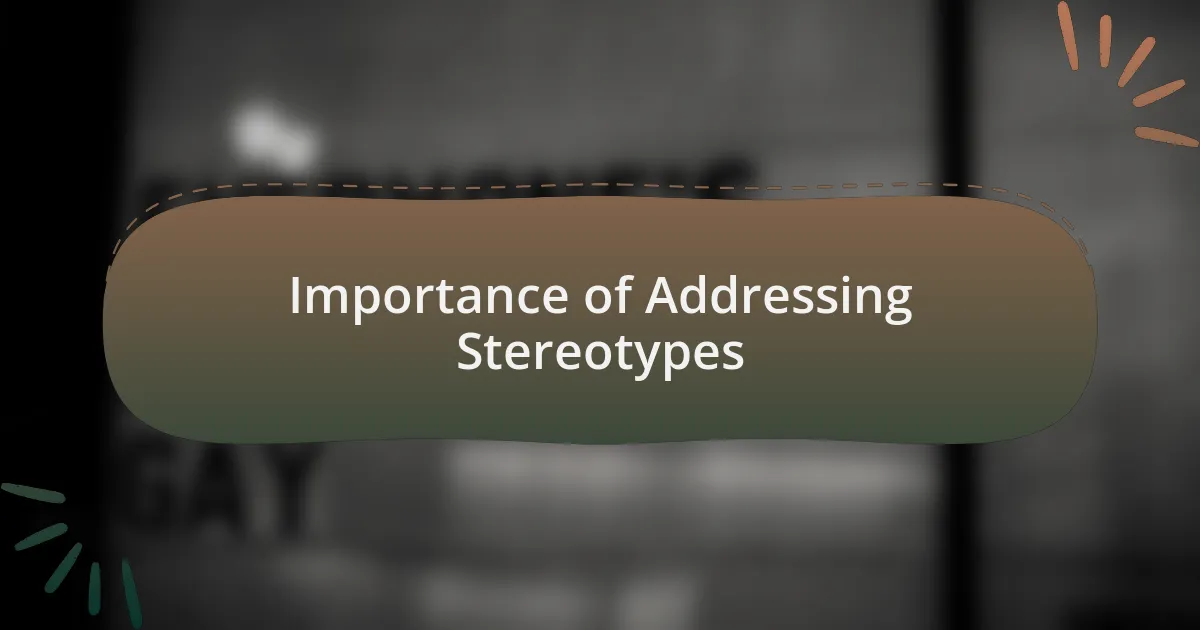
Importance of Addressing Stereotypes
Addressing stereotypes is vital because they can unconsciously shape the beliefs and actions of both teachers and students. I often reflect on a workshop I attended that tackled implicit bias, where I learned how my own assumptions could inadvertently limit students’ aspirations. Have you ever considered how your beliefs might affect your perceptions of others? Recognizing these biases not only fosters a more inclusive classroom but also encourages students to see beyond societal limitations they may face.
When I implemented a project that highlighted various prominent figures across genders in different fields, the impact was immediate. I saw students’ faces light up as they discovered role models who challenged traditional gender roles, sparking conversations that were both enlightening and empowering. It was a joy to witness their growing confidence, as they began to realize they, too, could defy expectations. This experience underscored for me just how powerful representation can be in reshaping narratives.
Moreover, addressing stereotypes fosters an atmosphere of mutual respect and understanding. In one memorable discussion, a male student bravely shared his discomfort with the expectation that he should be “tough” and not show vulnerability. This honesty opened a dialogue that allowed others, regardless of gender, to express their own struggles with societal pressures. Together, we began to dismantle the stereotypes that limit us all, crafting a space where every voice matters and every experience is valid. Isn’t it empowering to know that when we address stereotypes head-on, we pave the way for a richer, more diverse dialogue?
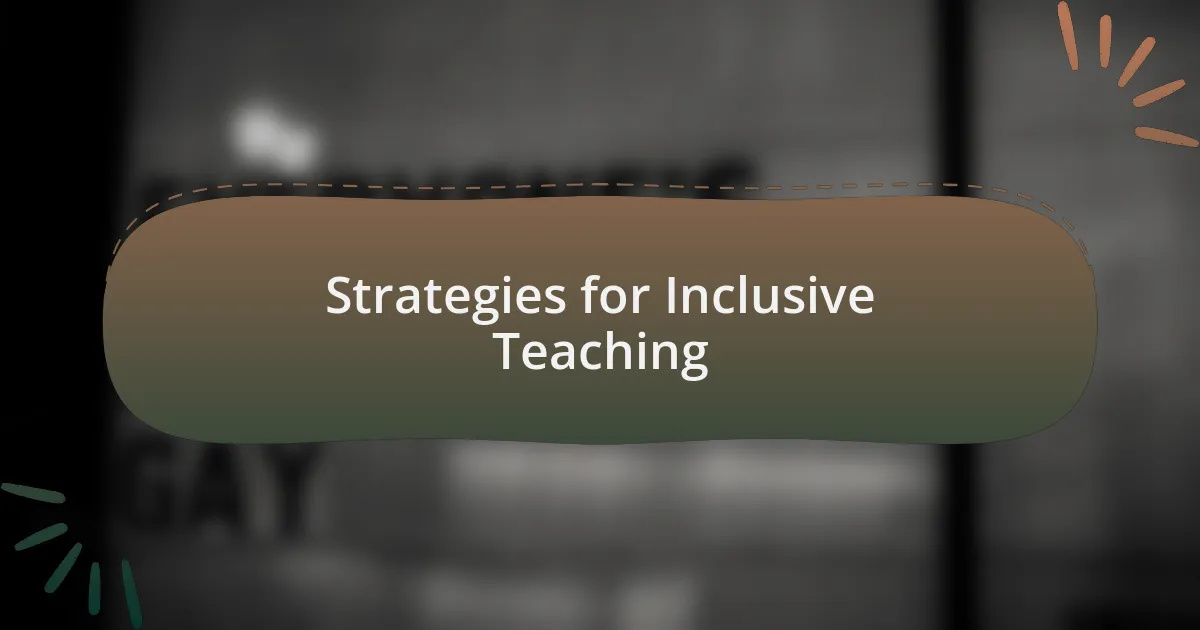
Strategies for Inclusive Teaching
Creating an inclusive environment requires active strategies that highlight diversity in every lesson. For instance, I once redesigned a curriculum unit on historical events by incorporating narratives from various cultural perspectives. This not only enriched the classroom discussion but also allowed students to see how different backgrounds influence our understanding of history. Have you ever thought how a single story could transform perspectives?
Another effective approach is to encourage collaborative learning, where students work in diverse groups. During a science project, I noticed that when students shared their varied viewpoints, they sparked a level of creativity that I hadn’t seen before. They began to appreciate one another’s unique strengths, which built a sense of community. Isn’t it fascinating how teamwork can break down barriers and enhance learning?
It’s also crucial to be mindful of language and expectations in the classroom. I made a conscious effort to use gender-neutral language and avoid assumptions about roles, which fostered a sense of belonging among all students. One day, a student approached me expressing gratitude for creating an environment where they felt seen and valued. Moments like this reaffirm to me the profound effect that simple changes can have in promoting inclusivity in teaching. How might such mindful choices shift the dynamics in your own classroom?
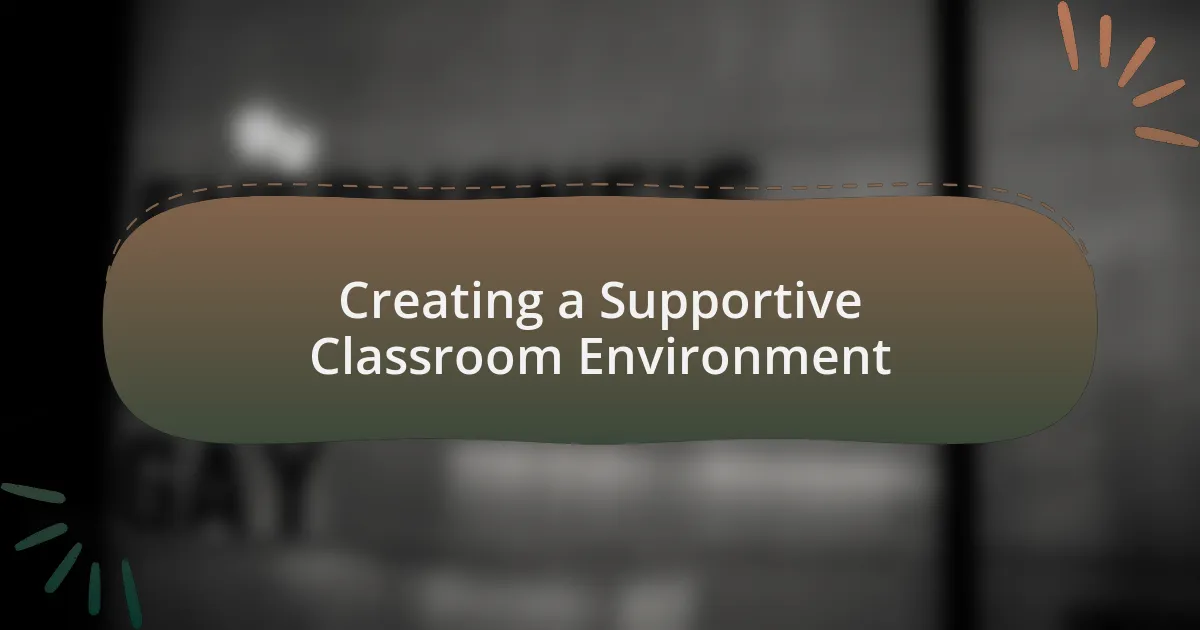
Creating a Supportive Classroom Environment
Creating a supportive classroom environment begins with building trust among students. I remember a time when I implemented a “circle time” ritual, where each student shared one positive thing about their day. This simple practice not only strengthened connections but also encouraged students to voice their thoughts in a safe space. Have you ever witnessed how sharing small things can lighten the classroom’s mood?
Another vital aspect is recognizing individual needs and strengths. I once had a student who struggled with traditional teaching methods, often feeling overlooked. By providing alternative assignments that aligned with their interests, I watched them flourish. It’s incredible how tailored support can unlock potential that might otherwise remain hidden, isn’t it?
Incorporating emotional check-ins has also been invaluable. At the start of each class, I invite students to share how they’re feeling, whether through a thumbs-up or a quick word. This practice cultivates empathy and awareness among peers, leading to a more caring atmosphere. Can you imagine the transformation when students become attuned to each other’s emotional landscapes?
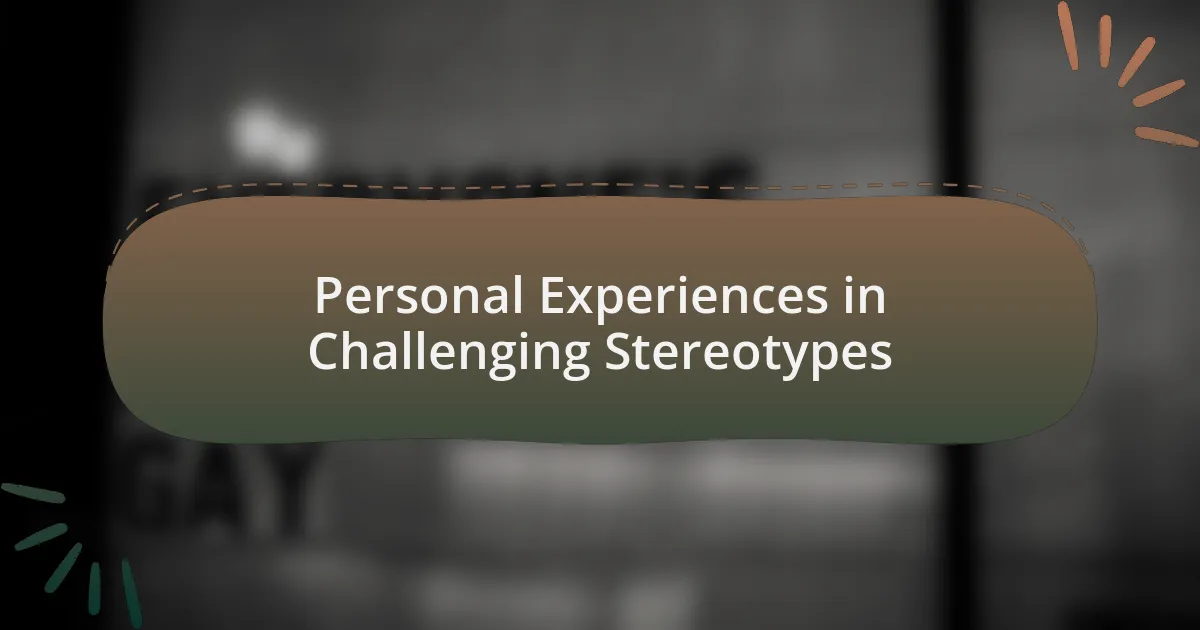
Personal Experiences in Challenging Stereotypes
Challenging stereotypes in my teaching journey has been deeply personal. I recall a time when a student made a comment that boys are better at math than girls. Rather than dismissing it, I seized the moment to discuss the importance of gender equality in capabilities. I encouraged the whole class to share their thoughts, and witnessing a shift in perspective from some of my students was profound. It made me realize how crucial it is to confront biases head-on.
In another instance, I had a bright girl who often held back in class discussions, fearing that her opinions weren’t valid because of her gender. By creating small group discussions where her voice was amplified, I could see her confidence bloom. Each time she spoke, I noted the spark in her eyes. Isn’t it remarkable how a supportive environment can empower someone to break free from the chains of stereotypes?
One of the most impactful lessons I learned was during a community event I organized, focusing on role models across genders. As I shared stories of women in science and men in caregiving professions, the reactions were telling. I could see students reevaluating their preconceived notions, and it struck me that storytelling is a powerful tool. How often do we underestimate the influence of narratives in shaping our beliefs?
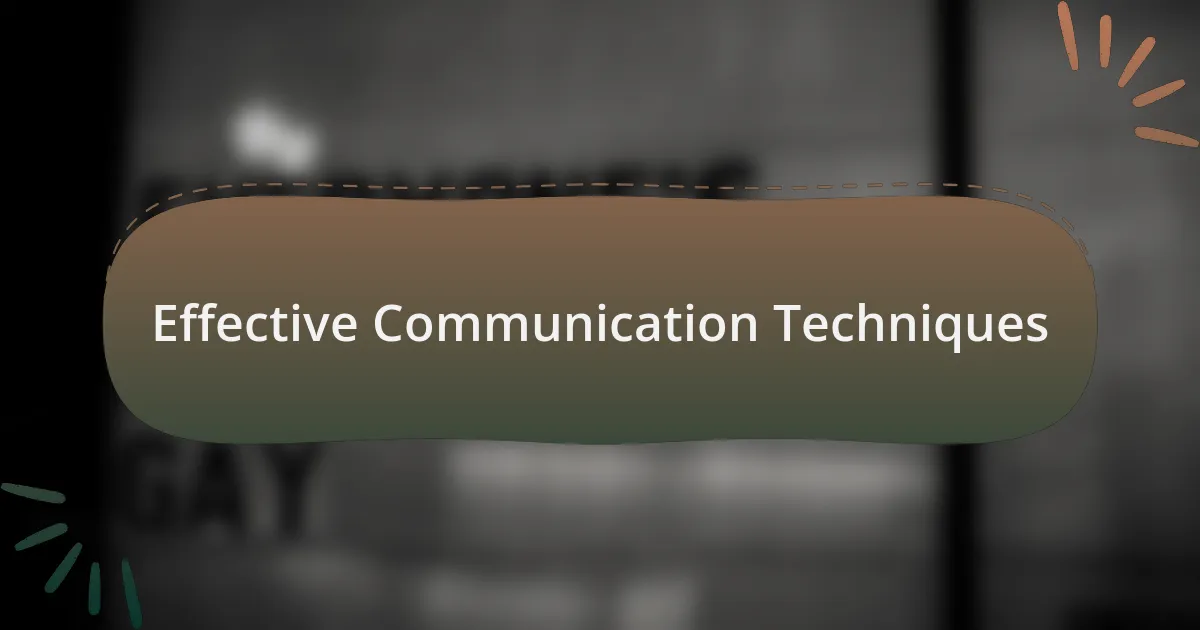
Effective Communication Techniques
Effective communication techniques in the classroom have proven invaluable in addressing stereotypes. For instance, I often use open-ended questions to invite dialogue. This was particularly enlightening when I asked students, “What makes someone a good leader?” The variety of responses not only showcased their perspectives but also illuminated the gender biases that still lingered beneath the surface.
Additionally, I’ve found that active listening fosters a safe space for students to express their thoughts freely. One day, after a student voiced concern about being judged for her opinions, I made it a point to validate her feelings. “Your viewpoint matters,” I assured her, and as I did, I could see the tension begin to ease. It was a reminder that acknowledging feelings plays a crucial role in effective communication, enhancing trust and openness among students.
Visual aids also serve as powerful communication tools. During a recent lesson, I incorporated graphs showcasing girls’ achievements in fields traditionally dominated by boys. As the data unfolded on the projector, I witnessed students leaning in, intrigued and surprised. Isn’t it fascinating how presenting hard facts can change minds and spark conversations that challenge outdated stereotypes?